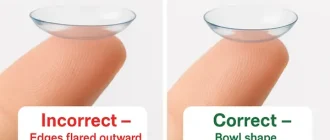Many people mistakenly believe that those who are legally blind are unable to see anything. In reality, legal blindness is determined by specific criteria set by the government and does not necessarily mean complete vision loss or constant darkness. Although their sight may be greatly affected, they can still perceive some degree of light or shapes.
When someone is legally blind, it means that they have a visual acuity of 20/200 or less in their better eye, even with corrective lenses. This means that what a person with normal vision can see at 200 feet, they would have to be 20 feet away to see the same level of detail.
People who are legally blind often have some level of functional vision. They might see light, shapes, or movement to some extent. Although their visual perception may be limited, they can still benefit from visual aids and adaptive techniques that help them navigate and interact with their surroundings.
It is important to note that blindness is not a straightforward condition and can vary greatly from person to person. Some individuals may experience different types of visual impairments, such as tunnel vision or blurred central vision. Others may have a better ability to perceive light but struggle with distinguishing objects or details.
For individuals with no light perception at all, it does not mean they see complete darkness. Instead, they might experience a lack of conscious perception of light due to severe damage to the retina or optic nerve. This condition is known as “total blindness,” and it prevents individuals from seeing any light or visual stimuli.
In recent years, scientists have made significant advancements in creating technologies that can assist individuals with visual impairments. For instance, retinal implants and artificial vision systems have been developed to restore some degree of visual perception in people with certain types of blindness. These innovations show promising results for those who are legally blind and could potentially enhance their ability to perceive light and images.
To sum up, individuals who are legally blind may have different levels of ability to perceive light, based on the seriousness and specific nature of their visual impairment. It is important to remember that blindness is not a straightforward condition, and people with visual impairments can still improve their daily lives with the help of assistive technologies and methods.





